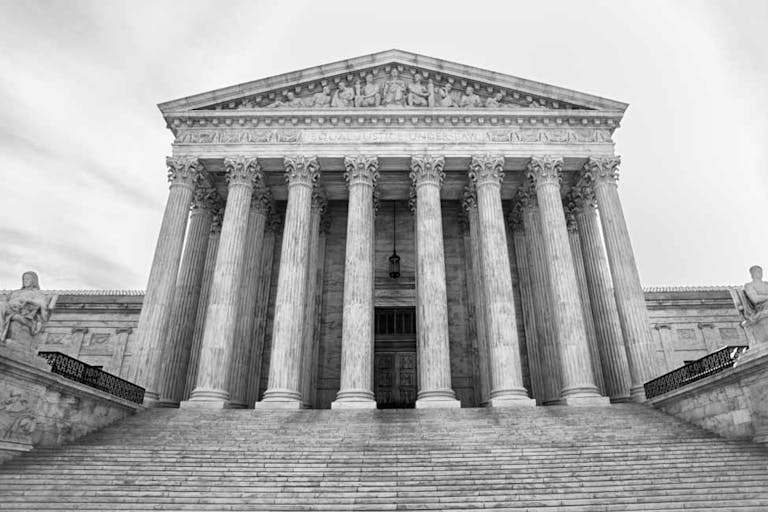
New Archbishop of Canterbury warns of danger in legalizing assisted suicide
Nancy Flanders
·
Despite discouraging Supreme Court ruling, pro-lifers should not give up or give in
(Townhall.com) Pro-lifers are rightly disappointed by today’s Supreme Court ruling in June Medical Services v. Russo. The narrow 5-4 decision struck down a set of popular common-sense health and safety regulations of abortion facilities that were enacted by the Louisiana state legislature. This marks the second time in four years that the U.S. Supreme Court has ruled against abortion facility health standards that protect women. In 2016 in Whole Women’s Health v. Hellerstedt, the Court struck down another set of protections that were enacted in Texas. However, since that time, Trump appointees Neil Gorsuch and Brett Kavanaugh have been confirmed to the U.S. Supreme Court. As such, pro-lifers were hoping that their appointments would result in a durable five-vote majority that would uphold incremental pro-life laws. However, today’s ruling shows that is not the case.
Indeed, the Court’s decision to double down on the status quo of Hellerstedt is certainly a setback. In light of this, it is all the more important for pro-lifers to steel their resolve to do as much as we can to save lives moving forward – and there are still many ways to do that, including by challenging Roe v. Wade more directly, which this particular case was not designed to do.
Recent history shows that persistence has paid off for the pro-life movement. In the past, when pro-life laws have been struck down by the courts, pro-lifers have successfully appealed these decisions. In other cases, revised laws have been upheld. For instance, the federal Hyde Amendment was struck down by lower courts before it was upheld by the Supreme Court in Harris v. McRae in 1980. On multiple occasions during the 1970s, the Supreme Court struck down pro-life parental involvement laws before upholding such laws in the 1980s and 1990s. Finally, the U.S. Supreme Court struck down a state partial-birth abortion ban in Stenberg v. Carhart in 2000, before upholding a revised partial-birth abortion ban in Gonzalez v. Carhart in 2007. As such, a revised set of standards may well be upheld in the future.
READ: Supreme Court narrowly strikes down Louisiana’s abortion admitting privileges law
Furthermore, while there is no way to predict which cases the court will hear, the plethora of pro-life state laws enacted over the past 10 years means other significant cases involving pro-life legislation could reach the Supreme Court in the near future. According to the pro-abortion Guttmacher Institute, over 400 state-level pro-life laws have been passed since 2010 – more than one-third of the total since Roe v. Wade – and these laws are increasingly protective. Just last year, Alabama enacted a law protecting all unborn children throughout pregnancy. Twenty-one states have enacted laws limiting late-term abortion after five months of pregnancy when there is clear scientific evidence that unborn children can feel pain. Pro-life legal analysts think laws like these may have the best chance of reaching the court and presenting a challenge to Roe v. Wade. This is because evidence of fetal pain might represent another compelling state interest to protect the preborn.
This is all happening in the context of positive pro-life trends in society. For instance, the pro-life movement has made durable, long-term gains in the court of public opinion. Polling by Gallup shows that the percentage of people identifying as pro-life has increased by 16 percentage points since 1995. Additionally, between 1991 and 2019, the number of abortion facilities has fallen by more than two-thirds, while the number of pregnancy help centers has steadily increased. Most importantly, data from both the Centers for Disease Control (CDC) and the Guttmacher Institute shows that the U.S. abortion rate has fallen by more than 50 percent since 1980. Additionally, an important reason for this long-term abortion rate decline is because a higher percentage of unintended pregnancies are being carried to term. This shows that pro-life educational, service and legislative activities have all been effective….
Continue reading at Townhall.com.
Michael J. New is a Visiting Assistant Professor at the Busch School of Business at The Catholic University of America. Follow him on Twitter @Michael_J_New.
LAN Editor’s Note: This article was published at Townhall.com and is reprinted here with permission.
“Like” Live Action News on Facebook for more pro-life news and commentary!
Live Action News is pro-life news and commentary from a pro-life perspective.
Contact editor@liveaction.org for questions, corrections, or if you are seeking permission to reprint any Live Action News content.
Guest Articles: To submit a guest article to Live Action News, email editor@liveaction.org with an attached Word document of 800-1000 words. Please also attach any photos relevant to your submission if applicable. If your submission is accepted for publication, you will be notified within three weeks. Guest articles are not compensated (see our Open License Agreement). Thank you for your interest in Live Action News!

Nancy Flanders
·
Analysis
Cassy Cooke
·
Analysis
Nancy Flanders
·
Newsbreak
Angeline Tan
·
Human Interest
Nancy Flanders
·
Issues
Nancy Flanders
·
Issues
Michael J. New
·
Guest Column
Michael J. New
·
Guest Column
Michael J. New
·
Guest Column
Michael J. New
·
Guest Column
Michael J. New
·